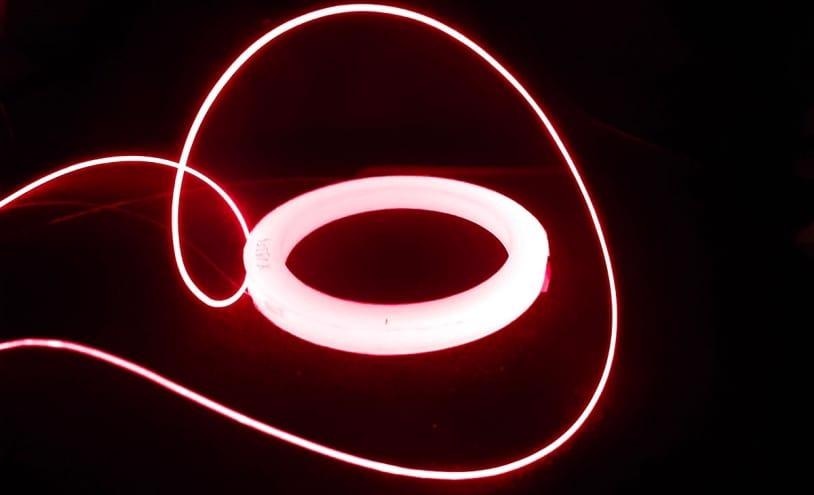Reviewed by Alex SmithAug 23 2021
Spacecraft requires effective radiation monitoring systems to protect both the crew and electronics from radiation. The International Space Station (ISS), quite similar to the Large Hadron Collider at CERN (Conseil Européen pour la Recherche Nucléaire or European Council for Nuclear Research), is a complicated radiation environment that needs customized dosimetry devices.
 Lumina is an optical fiber-based dosimetry experiment developed by CNES, iXBlue, UJM, and CERN. Image Credit: iXblue/CNES/G. Le Bras.
Lumina is an optical fiber-based dosimetry experiment developed by CNES, iXBlue, UJM, and CERN. Image Credit: iXblue/CNES/G. Le Bras.
Optical fiber-based technologies are capable of offering both distributed and point radiation dose measurement with high accuracy.
On August 18th, 2021, ESA astronaut Thomas Pesquet activated the Lumina experiment inside the ISS as part of the ALPHA mission. The project was developed under the coordination of the French Space Agency, CNES (Center National d'Études Spatiales or National Centre for Space Studies), and with the participation of CERN, the Laboratoire Hubert Curien at the Université Jean-Monnet-Saint-Étienne and iXblue.
The project employs two several-kilometer-long optical fibers as active dosimeters to quantify ionizing radiation in the ISS with very high sensitivity.
“When exposed to the space radiative environment, the optical fibers experience a partial loss of transmitted power, which we call radiation-induced attenuation,” explained Daniel Ricci, leader of the Fiber Optics Section, Engineering Department, CERN.
Using a reference control channel, the radiation-induced attenuation of some special optical fibers can be accurately measured and put in relation with the total ionizing dose. The sensitivity of the device is mostly governed by the length of the fiber. Depending on the dosimeter design, the longer the optical fiber dosimeter, the more sensitive it is.
Diego Di Francesca, Fiber-Dosimetry Project Leader, CERN
To protect the electronics inside the accelerators from radiation-induced damage, the CERN has been involved in research with radiation sensors based on optical fibers for around six years. Through this development, CERN has made a technical contribution to Lumina by supporting the theoretical analysis of the optimized architecture of the dosimeters. It also executed the low- and high-dose irradiation tests required to calibrate the instruments.
After the experiment is completely installed by Thomas Pesquet, CERN will also add value to the study of the experiment’s ground and flight data during its one to five years of operation.
A challenge of Lumina is to be sensitive enough to measure low radiation rate variations, considering the shielding provided by the ISS shell. The calibration performed at CERN, on a ground reference model, will enable us to post-process the measurements and will lead to accurate results.
Florence Clément, Project Manager, Lumina Experiment, National Centre for Space Studies
“We are convinced that the ISS is only a first step for fiber-optic dosimeters as we venture further into space. As we move away from Earth, the radiation levels increase, and so does the need for reliable dose monitoring,” Clément added.
With its involvement in this experiment, CERN continues to illustrate its added value for the space sector.
This joint experience in space is an important result of the framework collaboration agreement established between CERN and CNES a few years ago, with special focus on radiation issues. “To monitor radiation damage to electronics, CERN has developed instruments that can also be used on satellites.
Enrico Chesta, Aerospace Applications Coordinator, Knowledge Transfer Group, CERN
“In the field of irradiation testing, our unique technical facilities are able to reproduce a variety of environments representative of the most extreme radiation space conditions,” concluded Chesta.